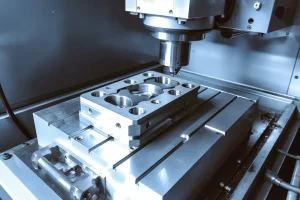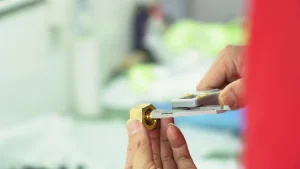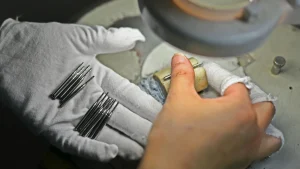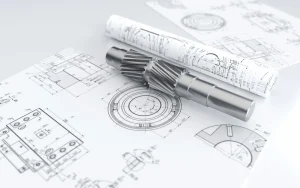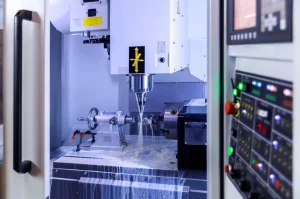During the processing of imported CNC lathes, the inconvenience of loading and unloading workpieces can be solved by the following methods:
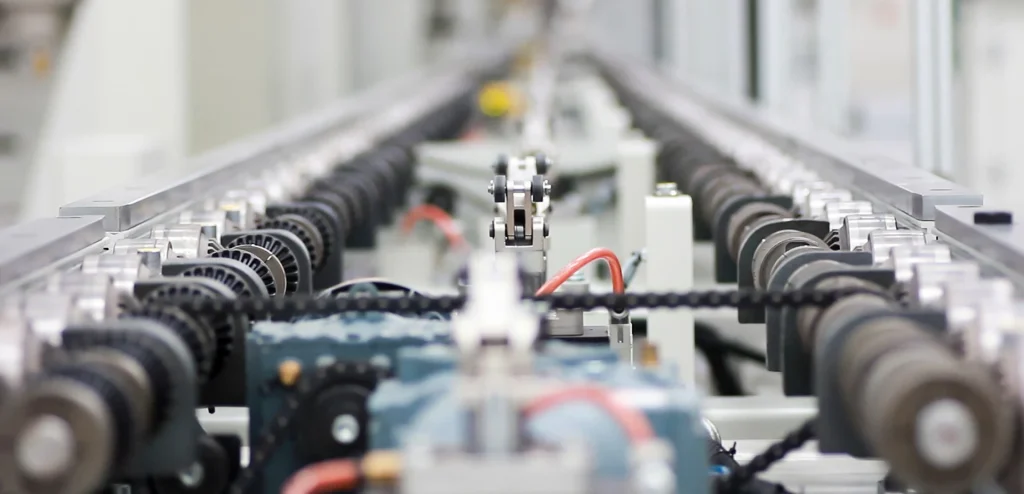
1. Optimize the clamping tooling
Design special fixtures
Design special fixtures according to the shape, size and processing requirements of the workpiece. For example, for shaft workpieces, elastic chuck fixtures can be designed. This type of fixture can be automatically centered and has uniform clamping force. When loading and unloading workpieces, you only need to loosen the chuck and insert or pull out the workpiece. The operation is simple and fast. For complex workpieces with irregular shapes, combined fixtures can be used. By combining multiple standard fixture components together, they can adapt to the special shape of the workpiece and achieve rapid clamping.
Special fixtures can also consider using quick clamping mechanisms, such as pneumatic or hydraulic clamping devices. These devices can provide sufficient clamping force in a short time, and the loosening and clamping operations can be controlled by buttons, which greatly improves the loading and unloading efficiency. For example, in the processing of some automotive parts, pneumatic chuck fixtures are used, and the time for loading and unloading workpieces can be shortened from several minutes to tens of seconds.
Use automatic clamping system
Automatic chuck system: Some imported CNC lathes are equipped with automatic chuck systems. This system can program the clamping and loosening of the chuck and can be seamlessly connected with the automated processing flow of the lathe. For example, when processing small workpieces produced in batches, the automatic chuck can automatically loosen after one workpiece is processed according to the preset program, and then load a new workpiece through the automatic loading and unloading device to achieve continuous and efficient processing.
Robot-assisted clamping: Use industrial robots to cooperate with CNC lathes to load and unload workpieces. The robot can accurately grab the workpiece and place it on the lathe fixture according to the pre-programmed path and action. The robot’s arm has multiple degrees of freedom and can flexibly adapt to workpieces of different shapes and positions. For example, when processing large aviation parts, the robot can accurately clamp heavy workpieces to the lathe workbench, improving the safety and efficiency of loading and unloading.
2. Improve loading and unloading equipment
Improve the performance of lifting equipment
If the workpiece is heavy and needs to be loaded and unloaded using lifting equipment, the lifting equipment can be optimized. For example, choose a high-precision electric hoist or crane, which can accurately control the lifting and moving position of the workpiece so that the workpiece can be accurately aligned with the lathe fixture. At the same time, the lifting equipment can be equipped with a wireless remote control device, so that the operator can control the lifting process in a safer and more convenient location.
For some workpieces with special shapes, special lifting tools can also be designed, such as a hoist with an adjustable clamp, which can better adapt to the shape of the workpiece and ensure the stability of the workpiece during loading and unloading. For example, when loading and unloading special-shaped workpieces with protruding parts, the adjustable clamp can firmly fix the protruding parts to prevent the workpiece from shaking during the lifting process.
Use auxiliary positioning devices
Install auxiliary positioning devices on the lathe workbench to help the workpiece to be positioned quickly and accurately. For example, a positioning pin or a positioning block is set. When the workpiece is placed on the workbench, the positioning pin cooperates with the positioning hole on the workpiece, or the positioning block contacts the edge of the workpiece, which can quickly determine the position of the workpiece and reduce the adjustment time during the clamping process.
Some advanced imported CNC lathes are also equipped with an optical positioning system, which uses technologies such as laser or infrared to position the workpiece. This system can detect the position deviation of the workpiece with high precision, and feed back the information to the lathe control system to automatically adjust the position of the clamp to achieve fast and accurate clamping.
3. Optimize the workflow and layout
Rationally arrange the layout of the work area
Rationally plan the workpiece storage area, loading and unloading area, and processing area. For example, set up a special loading and unloading platform near the lathe, and the height of the platform matches the height of the lathe workbench to facilitate the transfer of workpieces. At the same time, ensure that there is enough space in the loading and unloading area to facilitate the operation of lifting equipment or other loading and unloading tools, and avoid affecting the loading and unloading efficiency due to narrow space.
Set up appropriate material handling channels in the work area to ensure the smooth handling of workpieces. The width of the channel should take into account the size and turning radius of the handling equipment (such as forklifts, trolleys, etc.) to reduce obstacles during the handling process.
Plan an efficient loading and unloading process
Develop a detailed workpiece loading and unloading process, including the handling route, loading and unloading sequence, and operation steps of the workpiece from the storage area to the lathe. For example, for batch-produced workpieces, a streamlined loading and unloading process can be adopted. First, a batch of workpieces are arranged on the loading and unloading platform in the processing order, and then clamped, processed and unloaded in turn to improve the continuity and efficiency of the entire processing process.
Train the loading and unloading personnel to make them familiar with the loading and unloading process and operating specifications. Operators should understand the characteristics and usage of lathe fixtures, and master the correct loading and unloading techniques, such as how to avoid the workpiece colliding with the fixture and how to ensure that the workpiece is clamped firmly, so as to improve the loading and unloading speed and quality.

